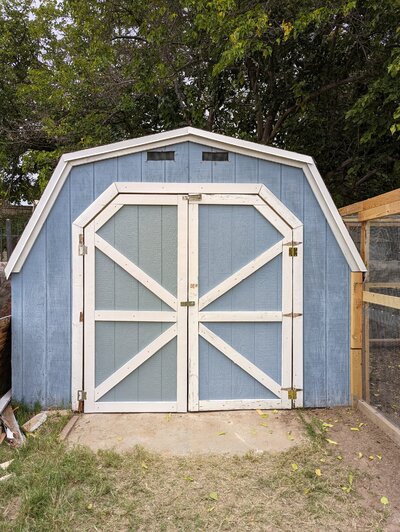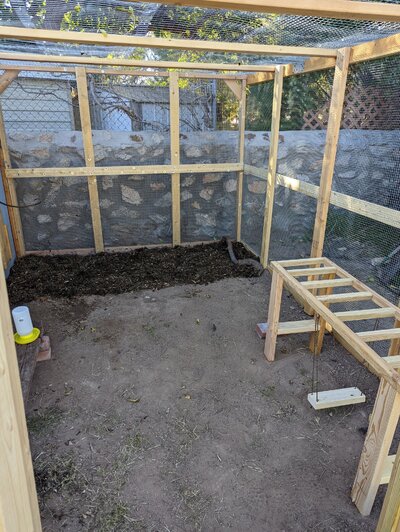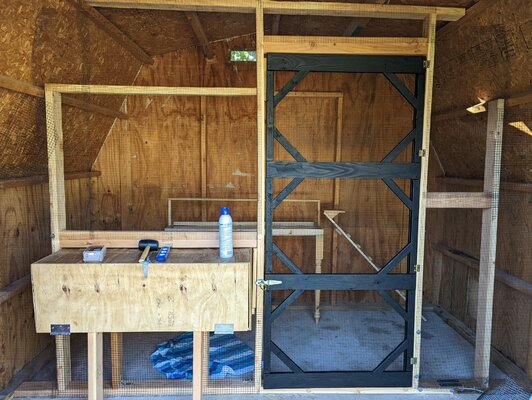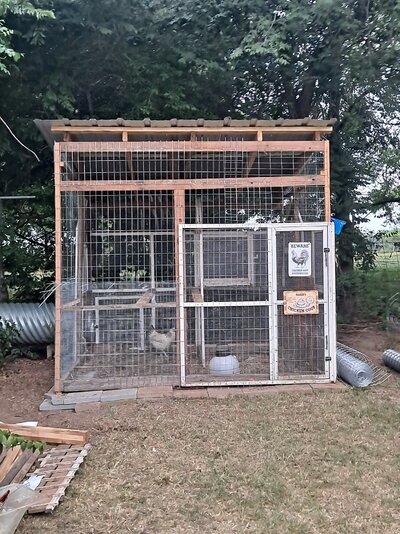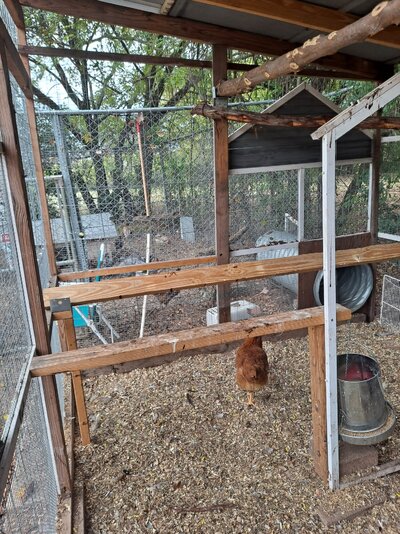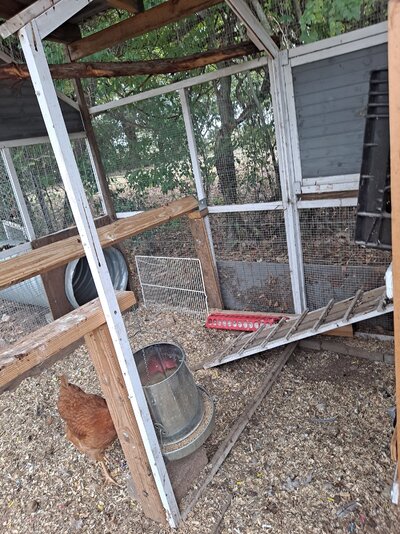KellyJ74
Chirping
My 6 chickens are approaching 3 months old and are outgrowing the brooder. The coop will be finished this week and I'm eager to put them in there, but is there a specific way to do it? I don't have other chickens, so no one to teach them, and they've been spending the day in the run for the past week, which they are all about eating bugs and shaking their tail feathers, then I bring them to the brooder around 5pm. Do I just put them in the run in the morning and leave the coop door open and see if they check it out or do I wait until around 5 or later and put them in the coop first?
Also, should I add more ventilation to the coop? I have 2, 3x9 vents on the front and back of the shed, but I feel like I should have more.
I'm in El Paso, TX, so I'm more worried about them overheating than being too cold.
These are progress pics of the wood shed-turned coop that I converted. They have a 4 1/2x10 space in the coop with 3, 12x13 nesting boxes and the run is 6x8x12. This is the first time I've ever built anything, so don't look too close
Also, should I add more ventilation to the coop? I have 2, 3x9 vents on the front and back of the shed, but I feel like I should have more.
I'm in El Paso, TX, so I'm more worried about them overheating than being too cold.
These are progress pics of the wood shed-turned coop that I converted. They have a 4 1/2x10 space in the coop with 3, 12x13 nesting boxes and the run is 6x8x12. This is the first time I've ever built anything, so don't look too close

